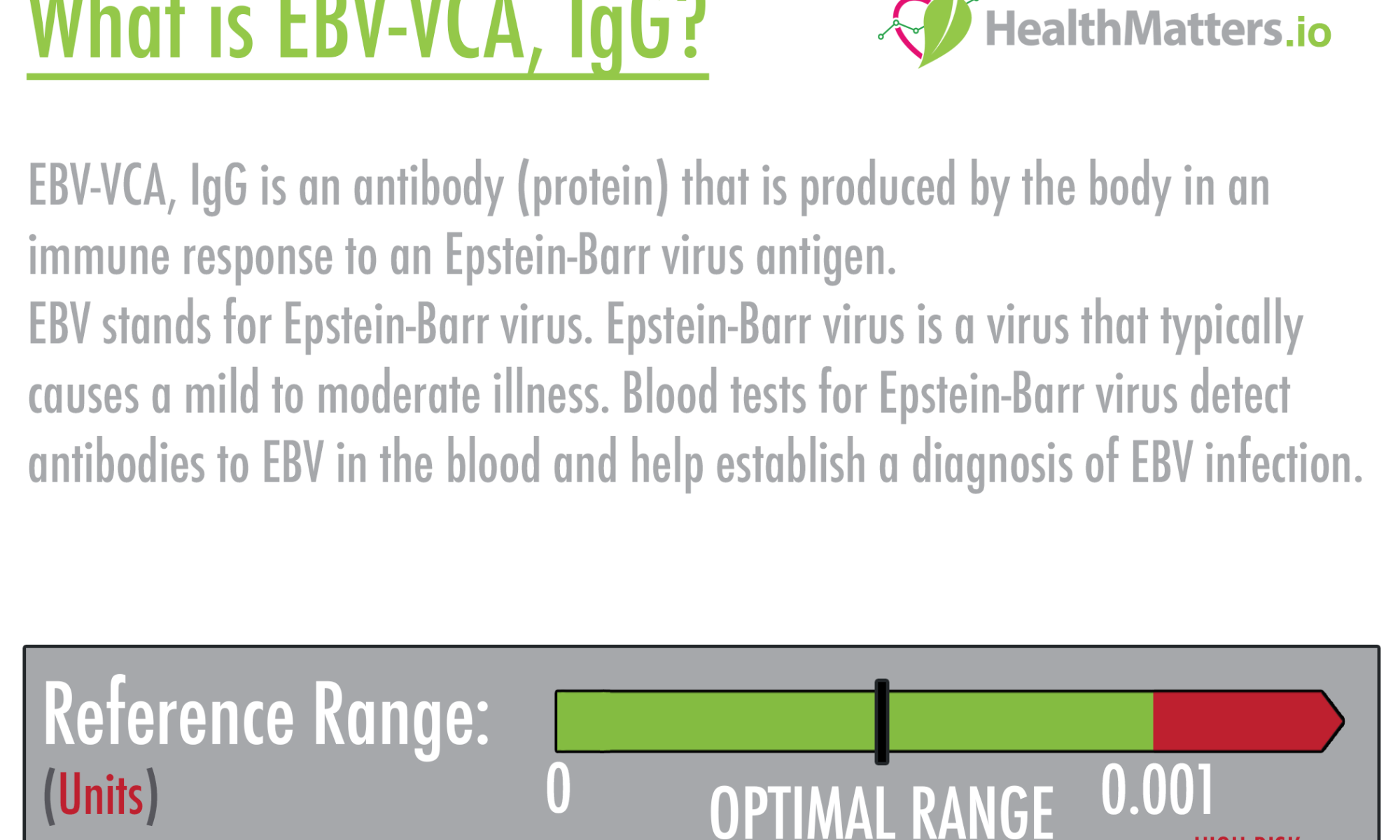EBV-VCA, IgG is an antibody (protein) that is produced by the body in an immune response to an Epstein-Barr virus antigen.
EBV stands for Epstein-Barr virus.
Epstein-Barr virus is a virus that typically causes a mild to moderate illness. Blood tests for Epstein-Barr virus detect antibodies to EBV in the blood and help establish a diagnosis of EBV infection.
More details on the infection?
Epstein-Barr virus causes an infection that is very common. According to the Centers for Disease Control and Prevention (CDC), most people in the United States are infected by EBV at some point in their lives. The virus is very contagious and easily passed from person to person. It is present in the saliva of infected individuals and can be spread through close contact such as kissing and through sharing utensils or cups.
Initial exposure:
After initial exposure to EBV, there is a period of several weeks before associated symptoms may appear. This is called the incubation period. During the acute primary infection, the virus multiplies in number. This is followed by a decrease in viral numbers and resolution of symptoms, but the virus never completely goes away.
Latent EBV:
Latent EBV remains in the person’s body for the rest of that person’s life and may reactivate but usually causes few problems unless the person’s immune system is significantly weakened.
Childhood versus adolescence infections:
Most people are infected by EBV in childhood and experience few or no symptoms. However, when the initial infection occurs in adolescence, it can cause infectious mononucleosis, commonly called mono, a condition associated with fatigue, fever, sore throat, swollen lymph nodes, an enlarged spleen, and sometimes an enlarged liver. These symptoms occur in about 25% of infected teens and young adults and usually resolve within a month or two.
Diagnosis of mono:
People with mono are typically diagnosed by their symptoms and the findings from a complete blood count (CBC) and a mono test (which tests for a heterophile antibody). About 25% of those with mono do not produce heterophile antibodies and will have a negative mono test; this is especially true with children. Tests for EBV antibodies can be used to determine whether or not the symptoms these people are experiencing are due to a current infection with the EBV virus.
EBV and mono:
EBV is the most common cause of mono. According to the CDC, examples of other causes of mono include cytomegalovirus (CMV), hepatitis A, hepatitis B or hepatitis C, rubella, and toxoplasmosis. Sometimes, it can be important to distinguish EBV from these other illnesses. It can also be important to rule out EBV infection and to look for other causes of the symptoms. Those with strep throat, an infection caused by group A streptococcus, for instance, need to be identified and treated with antibiotics. A person may have strep throat instead of mono or may have both conditions at the same time.
Different EBV tests:
Several tests for different types and classes of EBV antibodies are available. The antibodies are proteins produced by the body in an immune response to several different Epstein-Barr virus antigens.
During a primary EBV infection, the level of each of these EBV antibodies rises and falls at various times as the infection progresses. Measurement of these antibodies in the blood can aid in diagnosis and typically provides the healthcare practitioner with information about the stage of infection and whether it is a current, recent, or past infection.
Higher values:
The EBV-VCA IgG antibody emerges during acute infection with the highest level at 2 to 4 weeks, then drops slightly, stabilizes, and is present for life.
References:
– https://labtestsonline.org/tests/epstein-barr-virus-ebv-antibody-tests
Disclaimer:
Test results may vary depending on your age, gender, health history, the method used for the test, and other things. Your test results may not mean you have a problem. Ask your healthcare provider what your test results mean for you.
The information on healthmatters.io is NOT intended to replace a one-on-one relationship with a qualified health care professional and is not intended as medical advice.


